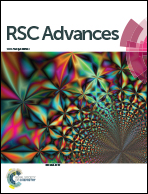Mutagenesis of precursor peptide for the generation of nosiheptide analogues†
Abstract
Nosiheptide, produced by Streptomyces actuosus ATCC 25421, is a typical thiopeptide biosynthesized from a precursor peptide NosM by post-ribosomal peptide synthesis. To assess which amino acid residue in the core peptide sequence of NosM is tolerated or restricted by the post-translational machinery for nosiheptide towards the change of amino acid side chains, a gene-replacement approach was implemented in the nosM-deletion strain. Site-directed mutagenesis of five cysteine residues involved in the formation of thiazoles and the third threonine residue without modification were carried out to generate ten NosM mutants with single residue replacement in the chromosome. The cysteine to serine mutations did not produce any predicted mature scaffolds, indicating that these replacements are not acceptable by the tailoring enzymes. Three out from five mutants of the third threonine residue in the core peptide of NosM led to the maturation of nosiheptide analogues retaining antibacterial activities. The present study reveals the limitation and opportunity for nosiheptide-producing strain to generate nosiheptide analogues, and provides an insight into appropriate position and amino acid side chain for precursor peptide engineering of nosiheptide biosynthesis.



 Please wait while we load your content...
Please wait while we load your content...